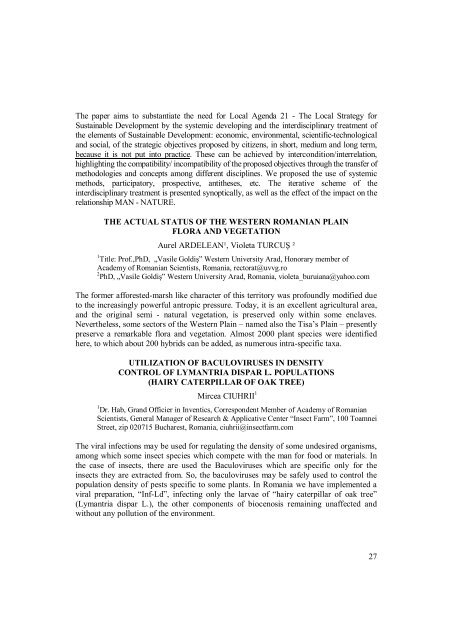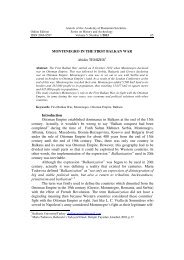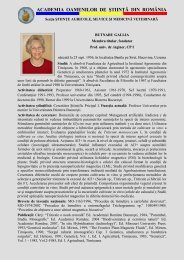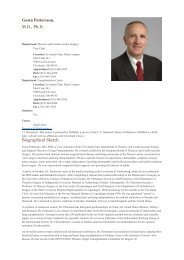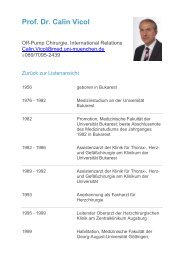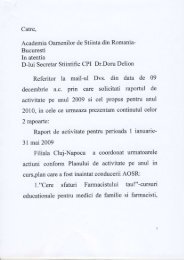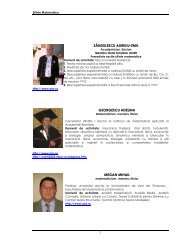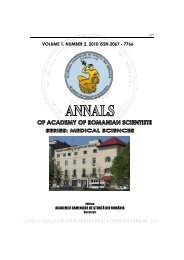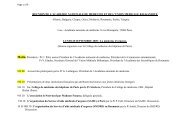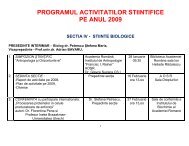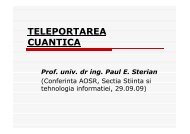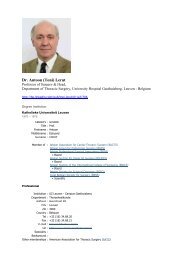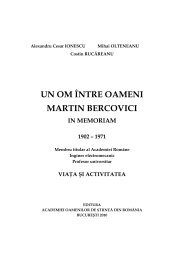sesiunea ÅtiinÅ£ificÄ de primÄvarÄ âomul Åi naturaâ 21-22 mai 2010 ...
sesiunea ÅtiinÅ£ificÄ de primÄvarÄ âomul Åi naturaâ 21-22 mai 2010 ...
sesiunea ÅtiinÅ£ificÄ de primÄvarÄ âomul Åi naturaâ 21-22 mai 2010 ...
- No tags were found...
Create successful ePaper yourself
Turn your PDF publications into a flip-book with our unique Google optimized e-Paper software.
The paper aims to substantiate the need for Local Agenda <strong>21</strong> - The Local Strategy forSustainable Development by the systemic <strong>de</strong>veloping and the interdisciplinary treatment ofthe elements of Sustainable Development: economic, environmental, scientific-technologicaland social, of the strategic objectives proposed by citizens, in short, medium and long term,because it is not put into practice. These can be achieved by intercondition/interrelation,highlighting the compatibility/ incompatibility of the proposed objectives through the transfer ofmethodologies and concepts among different disciplines. We proposed the use of systemicmethods, participatory, prospective, antitheses, etc. The iterative scheme of theinterdisciplinary treatment is presented synoptically, as well as the effect of the impact on therelationship MAN - NATURE.THE ACTUAL STATUS OF THE WESTERN ROMANIAN PLAINFLORA AND VEGETATIONAurel ARDELEAN¹, Violeta TURCUŞ ²1 Title: Prof.,PhD, „Vasile Goldiş” Western University Arad, Honorary member ofAca<strong>de</strong>my of Romanian Scientists, Romania, rectorat@uvvg.ro2 PhD, „Vasile Goldiş” Western University Arad, Romania, violeta_buruiana@yahoo.comThe former afforested-marsh like character of this territory was profoundly modified dueto the increasingly powerful antropic pressure. Today, it is an excellent agricultural area,and the original semi - natural vegetation, is preserved only within some enclaves.Nevertheless, some sectors of the Western Plain – named also the Tisa’s Plain – presentlypreserve a remarkable flora and vegetation. Almost 2000 plant species were i<strong>de</strong>ntifiedhere, to which about 200 hybrids can be ad<strong>de</strong>d, as numerous intra-specific taxa.UTILIZATION OF BACULOVIRUSES IN DENSITYCONTROL OF LYMANTRIA DISPAR L. POPULATIONS(HAIRY CATERPILLAR OF OAK TREE)Mircea CIUHRII 11 Dr. Hab, Grand Officier in Inventics, Correspon<strong>de</strong>nt Member of Aca<strong>de</strong>my of RomanianScientists, General Manager of Research & Applicative Center “Insect Farm”, 100 ToamneiStreet, zip 020715 Bucharest, Romania, ciuhrii@insectfarm.comThe viral infections may be used for regulating the <strong>de</strong>nsity of some un<strong>de</strong>sired organisms,among which some insect species which compete with the man for food or materials. Inthe case of insects, there are used the Baculoviruses which are specific only for theinsects they are extracted from. So, the baculoviruses may be safely used to control thepopulation <strong>de</strong>nsity of pests specific to some plants. In Romania we have implemented aviral preparation, “Inf-Ld”, infecting only the larvae of “hairy caterpillar of oak tree”(Lymantria dispar L.), the other components of biocenosis re<strong>mai</strong>ning unaffected andwithout any pollution of the environment.27


